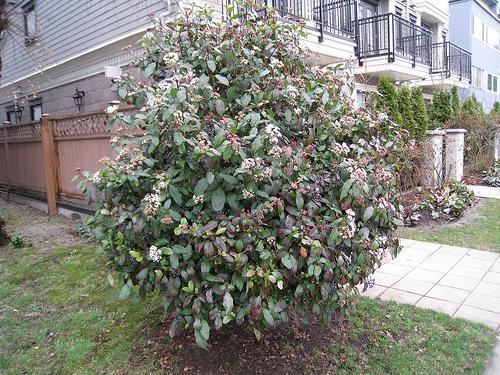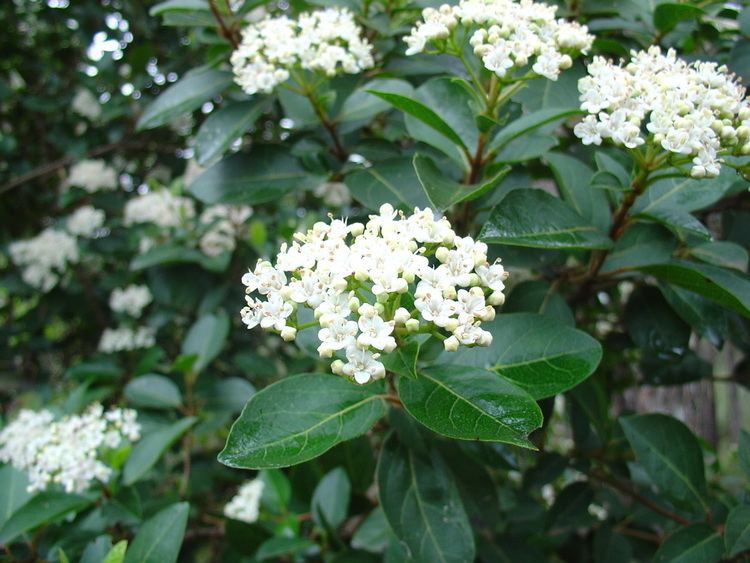Family Adoxaceae Rank Species | Genus Viburnum Higher classification Viburnum | |
 | ||
Similar Viburnum, Guelder‑rose, Viburnum plicatum, Photinia, Viburnum rhytidophyllum | ||
Spring bouquet viburnum viburnum tinus spring bouquet
Viburnum tinus (Laurustinus, laurustinus viburnum, or laurestine) is a species of flowering plant in the family Adoxaceae, native to the Mediterranean area of Europe and North Africa. Laurus signifies the leaves' similarities to bay laurel.
Contents
- Spring bouquet viburnum viburnum tinus spring bouquet
- Big plant nursery viburnum tinus lisa rose
- Description
- Habitat
- Cultivation
- Other uses
- Pests
- References

Big plant nursery viburnum tinus lisa rose
Description

It is a shrub (rarely a small tree) reaching 2–7 m (7–23 ft) tall and 3 m (10 ft) broad, with a dense, rounded crown. The leaves are evergreen, persisting 2–3 years, ovate to elliptic, borne in opposite pairs, 4–10 cm long and 2–4 cm broad, with an entire margin. The flowers are small, white or light pink, produced from reddish-pink buds in dense cymes 5–10 cm diameter in the winter. The fragrant flowers are bisexual and pentamerous. The flowering period is from October to June. Pollination is by insects. The fruit is a dark blue-black drupe 5–7 mm long.
There are three subspecies:
Leaves have domatia where predatory and microbivorous mites can be housed.
Habitat

It grows mainly in the Mediterranean maquis and in oak forests. It prefers shady, moist areas, at an altitude of 0–800 metres (0–2,625 ft) above sea level.
Cultivation
Other uses
V. tinus has medicinal properties. The active ingredients are viburnin (a substance or more probably a mixture of compounds) and tannins. Tannins can cause stomach upset. The leaves when infused have antipyretic properties. The fruits have been used as purgatives against constipation. The tincture has been used lately in herbal medicine as a remedy for depression. The plant also contains iridoid glucosides.
Pests

In south-east Britain Viburnum tinus is the principal host of the viburnum beetle (Pyrrhalta viburni), the country's "number one pest species" according to the Royal Horticultural Society.

